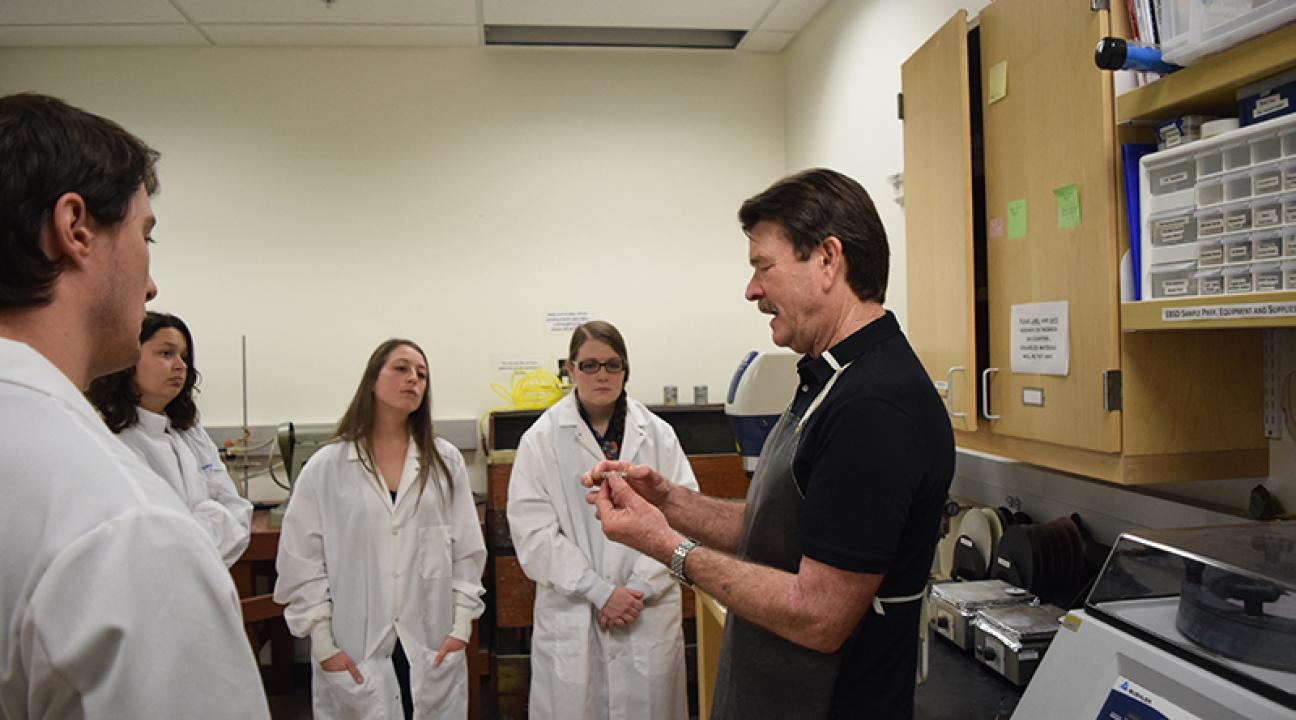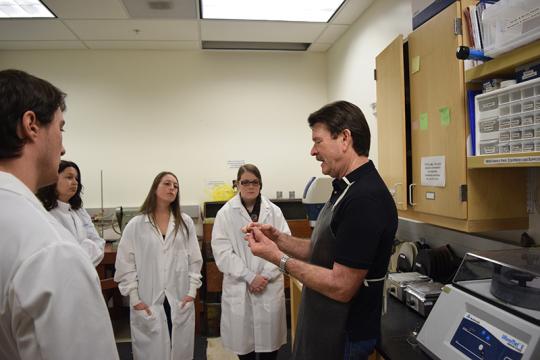Maps of Marin County
After more than 20 years of research, Sonoma State University geology professor David Bero has published detailed maps of Ring Mountain and the Tiburon Peninsula. He presented these new maps as the featured speaker of the SSU Geology Club's lecture series on February 19.
Geologists around the world are known for their love of the outdoors, and Bero, who has been lecturing at Sonoma State for the past eight years, is no exception. He has spent nearly every weekend during the past 20 years hiking the trails and enjoying the sweeping vistas of his native Marin County. But unlike day hikers gazing at the panoramic ocean views, Bero's focus is on the rocks beneath him.
"I have lived and worked in the Bay Area for much of my career," says Bero. "Not all geologists are fortunate enough to have world-class geologic localities right out their front door. I have always been drawn to the beauty of Marin County and the rocks of the Franciscan Complex underlying the area. That combination has kept my interest and has remained my research focus for over two decades."
The rocks of the Franciscan Complex make up the remnants of an ancient subduction zone, where oceanic crustal rocks are pushed down to great depths beneath a continent. During this process, rocks are altered by increased heat and pressure, later moving back toward the surface along a series of complex faults.
"The unique thing about Ring Mountain is the concentration and variety of the high grade metamorphic blocks that occur there," says Bero. Metamorphic blocks are rare, ancient rocks composed of unusual minerals. "The variety of temperature and pressure conditions recorded by these metamorphic blocks has made this area a key laboratory for a better understanding of the subduction process."
Bero is one of many geologists who have studied Ring Mountain over the years, but nothing has been published on the scale and resolution he has made. This is now the definitive geologic map of the region.
"I've spent many days out there during the past 20 years mapping sorting out the variety of rock types and multiple fault offsets representing about 160 million years of local earth history," says Bero. "I hope these geologic maps and accompanying report will be useful for those in the geologic community considering, or actively involved in, research in the area, as well as those teaching or leading field trips in one of the classic area of the Franciscan Complex."
Professor Bero's geologic maps of Ring Mountain and the Tiburon Peninsula, as well as a detailed report on the geology and structure of the area, Map Sheet 62, can be purchased from the California Geological Survey.
--Philip Mooney



